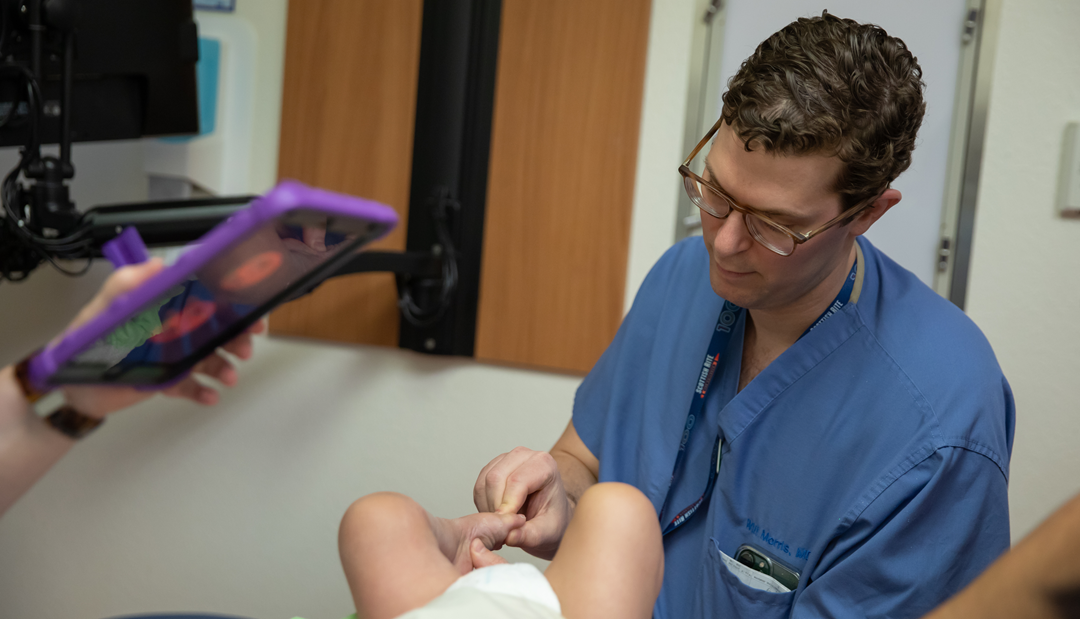Health conditions that limit your child’s ability to walk, run, play and just be a kid can take a lot of fun out of childhood. An ankle-foot orthosis could be the solution your child needs, particularly if he or she has muscle or joint problems in the legs, ankles or feet. These specialized orthotics can help relieve uncomfortable symptoms, allowing children to return to their daily activities.
What Is an Ankle-Foot Orthosis?
Ankle-foot orthoses (AFOs), sometimes called AFO braces, are devices designed to support and improve the function of your child’s foot and ankle. Pediatric orthopedic specialists often prescribe them to children with conditions that cause joint instability, irregular walking patterns and muscle weakness or stiffness.
Your child might need an AFO if he or she has:
· Deformities of the foot or ankle
· Neuromuscular disorders, such as cerebral palsy, muscular dystrophy and spina bifida
· Peripheral nerve injuries
· Spinal cord injuries
AFOs can also treat ankle instability caused by cerebral palsy and other neuromuscular disorders, congenital abnormalities and injuries. A child with ankle instability may have a hard time maintaining balance, walking or playing. An AFO provides stability, improves gait patterns and prevents additional complications associated with ankle instability.
Three Primary Types of AFOs
Typically made from lightweight and durable materials, such as plastic or carbon fiber, an AFO holds your child’s foot and ankle in the proper position. They can be custom made to fit your child to ensure a secure fit.
Many people confuse orthotics with prosthetics, but they are not the same. A prosthetic device replaces a missing limb, whereas orthoses and orthotic devices, like AFOs, support and correct musculoskeletal problems.
There are many types of AFOs, which can range from very rigid to more flexible. The right device for your child will depend on his or her condition and the location of the issue. In general, AFOs fall into these categories:
· Solid AFOs: These provide maximum support and allow for very little movement of the ankle or foot. They often benefit children with neuromuscular conditions that cause severe muscle tightness.
· Flexible AFOs: Designed to give kids more movement in the foot and ankle, these AFOs allow for a more natural walking motion and give kids more freedom to play while still supporting the muscles and joints.
· Dynamic AFOs: These orthotics have spring-like mechanisms to assist with push-off during walking, which can be helpful for children with muscle weakness.
If your child has severe muscle weakness, joint instability or paralysis, he or she may need a knee ankle foot orthosis (KAFO). While most AFO braces come up to a child’s calf, KAFO braces extend from the ankle to the knee or even higher.
On the other hand, children with mild to moderate foot and ankle conditions, such as hypermobility or pronation (inward rolling of the foot), may need only a supramalleolar orthosis (SMO). SMO braces reach an area just above the ankle called the supramalleolar region, offering foot and ankle support without limiting a child’s overall mobility.
Life With an AFO Brace
You can take some steps to help ensure your child’s AFO works as well as it should, no matter what type they have. Make sure your child:
· Always wears shoes. Properly fitting shoes with good support will keep your child comfortable and prevent slips and falls while wearing the orthosis.
· Always wears socks under the AFO. Socks can protect your child’s skin from moisture, blisters and irritation caused by the device.
· Follows instructions for wearing the AFO. Your specialist will show you how to put the device on correctly and adjust the buckles and ankle straps. He or she will also let you know how long your child should wear the device. If your child seems resistant, have him or her start with wearing it only a few minutes a day, gradually working up to the recommended length of wear.
· Wash your child’s foot every day. You’ll not only keep his or her skin clean, but you can also look for bruising, redness and other signs the orthosis is causing discomfort.
Does your child need an ankle-foot orthosis? Our Orthotics & Prosthetics department craft state-of-the-art, custom-made orthoses in house. To learn how we can help your child, call 214-559-7440.

